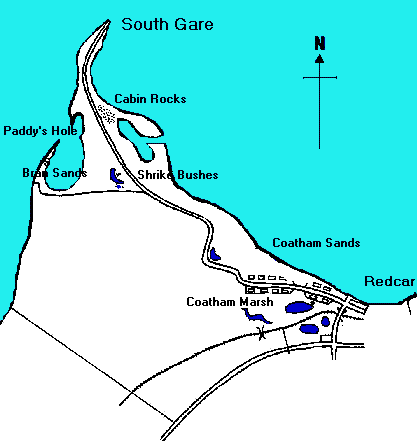Birdwatching at South Gare
I think the South Gare is a very interesting place. It is a man-made breakwater which sticks out into the Tees estuary, it was built about 100 years ago and it is made up of thousands of tons of "slag" from the blast furnaces of Teesside. The position of the Gare on the North East coast makes it a good migration watching spot. The slag also benefits the wildlife in this area, the limestone content of the slag gives the area a base rich soil. This has proved to be attractive for "lime loving" plants to colonise the grassland and thin soils near the end of the Gare and around the sand dunes. This is one area of Teesside which has never been farmed in any way and has not had herbicides sprayed on it.
The mixture of estuary, scrub, grassland, rocks and shelter has given the Gare the right ingredients for a good migration watching spot. Although sea watching does take place from the Gare, Hartlepool is actually better for this as the sea birds pass closer to shore, nevertheless, the Gare is quite good for sea watching if the conditions are right. However, the main claim to fame for the Gare is the "fall" migrants. During the spring and autumn if the conditions are just right, the end of the Gare can be covered with migrants such as Goldcrests, Robins, Thrushes, and many other small birds. The limited amount of shelter at the Gare means that the birds are usually quite easy to locate when they arrive. Many species seem to end up in the same places year after year e.g, the "Shrike Bushes" these have held many Red-Backed Shrikes over the years.
The links to the left give more detailed information about the various habitats around the South Gare.

The South Gare and Redcar shore